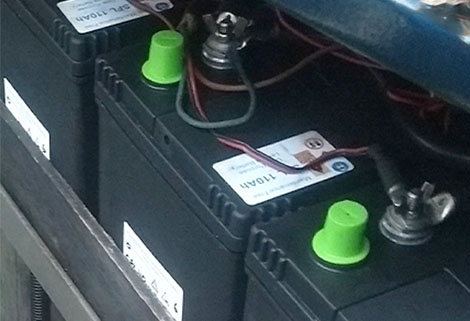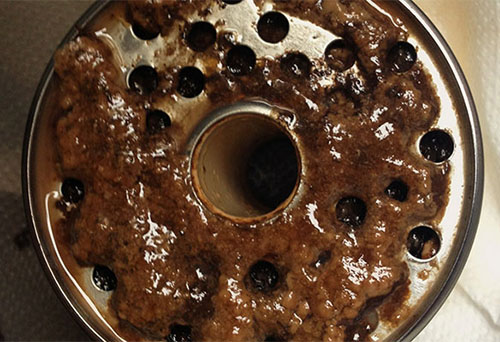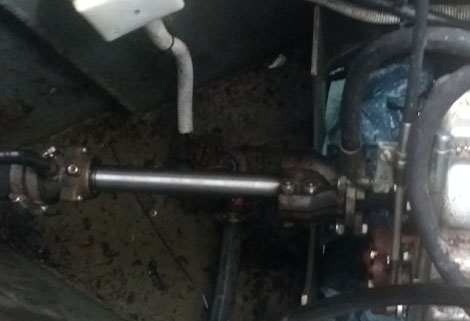post lockdown maintenance tips
As lockdown restrictions ease and people start to cruise the waterways again, River Canal Rescue’s managing director, Stephanie Horton, has some post lockdown maintenance tips for owners with boats left sitting idle.
Batteries
 If they’re not in a good condition, your engine won’t start. Look out for corrosion of the terminals and check the voltage. If below 12.5V, and the engine will start, the battery may need a recharge, so run your engine for a few hours. If the voltage doesn’t increase, change the battery. Batteries lower than 10V can potentially be recharged at home (although they may not recover).
If they’re not in a good condition, your engine won’t start. Look out for corrosion of the terminals and check the voltage. If below 12.5V, and the engine will start, the battery may need a recharge, so run your engine for a few hours. If the voltage doesn’t increase, change the battery. Batteries lower than 10V can potentially be recharged at home (although they may not recover).
Starter systems must have the right batteries. A cranking battery delivers a high output quickly while a leisure battery delivers a lower continuous output. Systems’ charging times vary, however a 70amp alternator charging four x 110amp batteries from flat will take around three to five hours.
Each battery cell can affect the whole battery bank, so to prevent deterioration, regularly check and top up the cells’ water levels with de-ionised water. To check levels, remove the caps (where applicable) and use a mirror to look into the hole. If one cell’s water level drops below 50% it will bring the bank’s capacity down to the same level, irrespective of the other batteries’ condition. Never mix batteries and always replace a whole bank of old with new.
For a good connection, ensure the battery terminals are tight and greased (Vaseline does the trick). It only needs one loose terminal to cause a problem (usually the main earthing cable connected to the engine bed). Look out for any green or white deposits and clear using emery paper.
Overcharged batteries can bulge, gas or explode. If they smell like rotten eggs, they’re likely to be gassing, so before accessing, turn off any chargers and your engine, and wait a couple of hours (a spark can cause an explosion). If the batteries have exploded, sprinkle bicarbonate of soda over the affected area to neutralise the acid, remove all batteries and replace with new.
Electrical
Electrical issues are usually due to poor connections and broken wires. Check for corrosion, wires coming away, loose connections or disconnected wires before starting a journey and use a water resistant spray, such as WD40 or petroleum jelly to stop damp getting into isolators and block connectors.
If it’s an intermittent issue, check the isolator switch, turning from one position to another. If the problem continues, ask an engineer to investigate as tracing faults can be very difficult. With a wiring ‘meltdown’ - due to overcharging or faults developing – call an expert to investigate the cause.
Fuel issues
 Fuel problems typically occur when a vessel is left idle and are mainly caused by diesel bug (a black soot/jelly-looking enzyme that lives off water) and contaminated water. Once in the system, diesel bug clogs the engine’s fuel lines, filters, injectors and pumps and stops the engine working. Mild cases respond to a fluid ‘Marine 16’; it prevents bacterial growth and kills anything forming in the tank. More severe cases require a diesel bug shock treatment.
Fuel problems typically occur when a vessel is left idle and are mainly caused by diesel bug (a black soot/jelly-looking enzyme that lives off water) and contaminated water. Once in the system, diesel bug clogs the engine’s fuel lines, filters, injectors and pumps and stops the engine working. Mild cases respond to a fluid ‘Marine 16’; it prevents bacterial growth and kills anything forming in the tank. More severe cases require a diesel bug shock treatment.
If you have a pre-filter, drain off any water to prevent it being drawn into the fuel system. If you don’t have a filter, drop a clear pipe into the fuel tank, place your thumb over the end (to capture the fluid) and withdraw the hose. This will tell you how much water is in the bottom of the fuel tank (and if you have diesel bug).
If there’s one to two inches of water, drain off via the tank drain (if applicable). Remove the bolt and drain down until fuel comes out. Alternatively, use an oil extraction pump, and with the pipe pushed to the bottom of the tank, draw out fluid until diesel comes through. Diesel sits on top of water and will only appear once the water’s been removed.
Water in the bilges
 If the bilges are full of oil and water when the engine’s running, it will be thrown over the engine, hitting electrical components. If left for a while, rust and corrosion can develop and affect their operation, so check and clean the bilges frequently. If left to accumulate, water can get into the bell housing and corrode the drive plates and other engine parts.
If the bilges are full of oil and water when the engine’s running, it will be thrown over the engine, hitting electrical components. If left for a while, rust and corrosion can develop and affect their operation, so check and clean the bilges frequently. If left to accumulate, water can get into the bell housing and corrode the drive plates and other engine parts.
Bilges containing only water, can be pumped out with a clear conscience, but if they’re contaminated, pump out using a bilge filter, like Bilgeaway www.bilgeaway.co.uk or leave it to a marina. Bilgeaway is a cartridge filter that removes contaminants (petrol, diesel, engine oil etc) from the bilge area, using a non-toxic solution to render its contents non-reactive.
An automatic bilge pump is a must; it safeguards against water build-up and gives peace of mind when away from the vessel. Similarly, cleaning the deck gunnels is top priority; this allows rain water to run off easily, reducing the risk of water ingress.
Fan belts
Always carry a spare, and before setting off, check its condition. Twist the belt and look for cracks or fraying; this will tell you if a new belt is needed. Squealing from an old belt suggests a replacement is needed or it may need tightening. If it’s a new belt, some adjustment may be required.
Guidance on how to change a fan belt can be found online, on RCR’s website or in the book Narrow Boat Engine Maintenance and Repair.
Focusing on diesel engines and their arrangements, Narrow Boat Engine Maintenance and Repair explains the theory behind the boat’s main systems, including propulsion, cooling and electrics, and gives instructions on how to identify key components, locate faults and where possible, how to fix them.
Retailing at £18 (discounted for RCR members), the book is available from RCR Website and bookshops.

